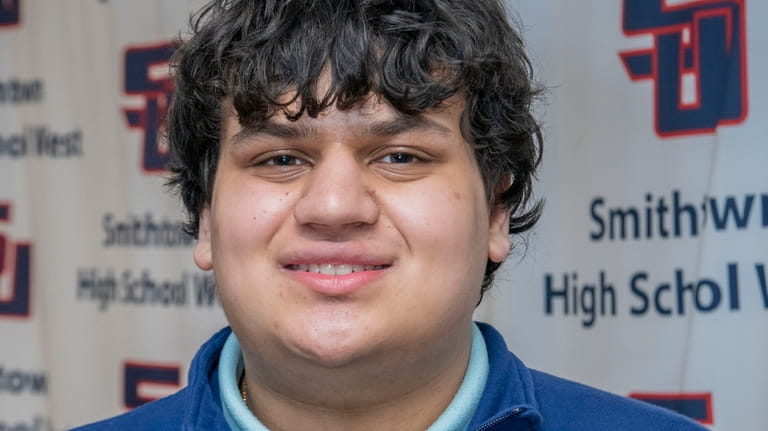5 Suffolk students finalists in National STEM Challenge

A new method to restore eelgrass. A filter to reduce nitrogen pollution. A study to evaluate the impact of herbicides on monarch butterflies.
All of these projects were conducted by Long Island teenagers, finalists in the National STEM Challenge. The first year of the national competition, co-presented by the U.S. Department of Education and educational media company EXPLR, garnered more than 2,500 entries.
Out of 280 finalists announced this winter, eight are from New York. Of those, five are from Long Island — four from the same classroom at Brentwood High School, and another from Smithtown West.
Jenny Buccos, co-director of the competition, said projects were reviewed based on “innovation” and potential to create a positive impact on communities and the planet.
“We really wanted to put to kids that they are change makers and innovators now,” Buccos said.
The prize for 125 “champions” will be an all-expenses paid trip to Washington, D.C., where the students will have the opportunity to showcase their projects to leaders in government and business.
The National STEM Festival, which will be held in April, will include representatives from NASA, the Department of Defense and the Centers for Disease Control and Prevention, among other groups, according to Buccos.
At Brentwood High School, finalists came from a lab-style classroom where students focus on projects designed to reflect issues important in Brentwood and across Long Island.
“The idea is that they’re asking questions of emerging relevance … questions that you want people to be aware of in their community,” said Rebecca Grella, who heads the research program at Brentwood High School. This year, she is in Washington, D.C., for an educator fellowship program, but has continued advising her students.
Alisha Ahsan, 17, a senior at Brentwood and a finalist with the National STEM Challenge, worked on a project studying how nitrogen pollution negatively affects eelgrass, and proposed a method to help restore the declining sea grass by gluing seeds onto live shellfish.
“It’s important for us to conserve environments and habitats like eelgrass beds,” she said.
Amanda Sanchez, 17, competition finalist and a senior at Brentwood High School, said her project investigated the role herbicides may have played in the decline of the monarch butterfly population by testing the impact of the chemicals on fruit flies.
Sanchez said she was drawn to focus on the insect because of her personal connection with monarch butterflies, which remind her of “happy memories” from her grandmother’s garden. Her research is meant to help “find a solution to protecting” the pollinators, she said.
Stephanie Pizano, 18, a Brentwood senior and another competition finalist, invented a filter to reduce nitrogen pollution from fertilizer runoff and septic waste. She built a mini 3D toilet with pipes to demonstrate how the filter works.
“After seeing the effects of nitrate, I wanted to build something to stop it,” she said.
Ariel Alexis Miranda 17, another finalist from the group of seniors at Brentwood, focused his research on proposing improvements for the high-resolution digitizer at The National Synchrotron Light Source-II at Brookhaven National Laboratory.
“I see this allowing for new research, especially in physics,” Miranda said.

Finalist Sudarshan Padmanaban, a student at Smithtown West High School, studied the effect of air pollution on the transmission of COVID-19, using government databases. Credit: Rick Kopstein
Sudarshan Padmanaban, 17, a senior, is the only student at Smithtown High School West to move on to the final round of the competition. For his project, Padmanaban studied the effect of air pollution on the transmission of COVID-19, using government databases. He aims to eventually publish his work and hopes it might inspire government officials to work on reducing air pollution.
Padmanaban is part of a research program at the high school where students work on “in-house projects,” said Joanne Figueiredo, science research coordinator at Smithtown West. “We have … a number of different types of projects that kids are involved in, very much dependent on their specific interests,” ranging from biochemistry, to engineering and environmental stewardship.
“The beauty of these projects is … it might start with an idea from me or something that we have going on in the lab, but it morphs into their project,” Figueiredo said. “It takes their identity, and their interest is really what directs the project as it evolves. That’s what we want science to be. We want kids to feel empowered.”
CORRECTION: An earlier version of this story misspelled the last name of Joanne Figueiredo.

Updated now Newsday travel writer Scott Vogel took the ferry over to Block Island for a weekend of fun.

Updated now Newsday travel writer Scott Vogel took the ferry over to Block Island for a weekend of fun.

